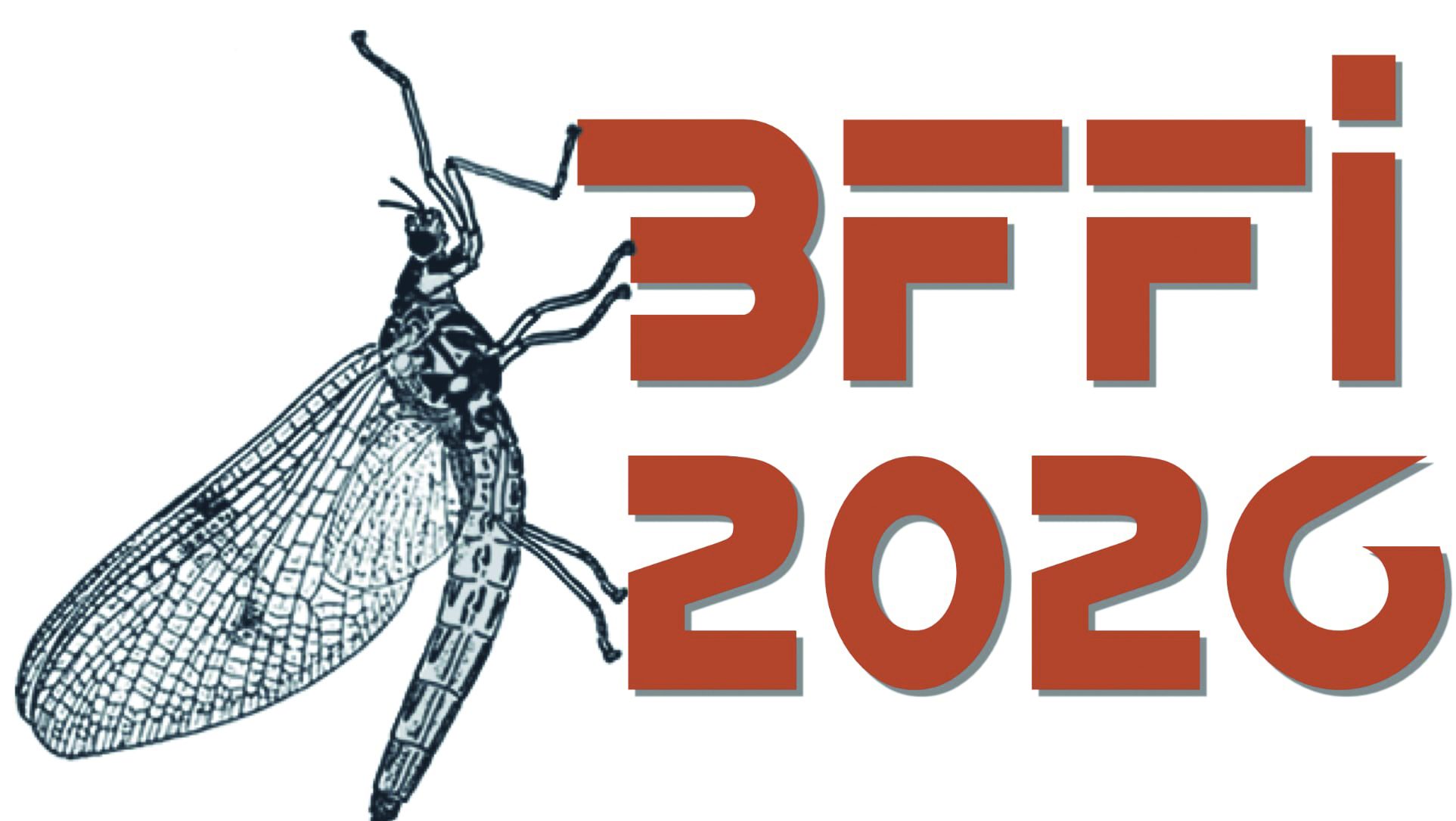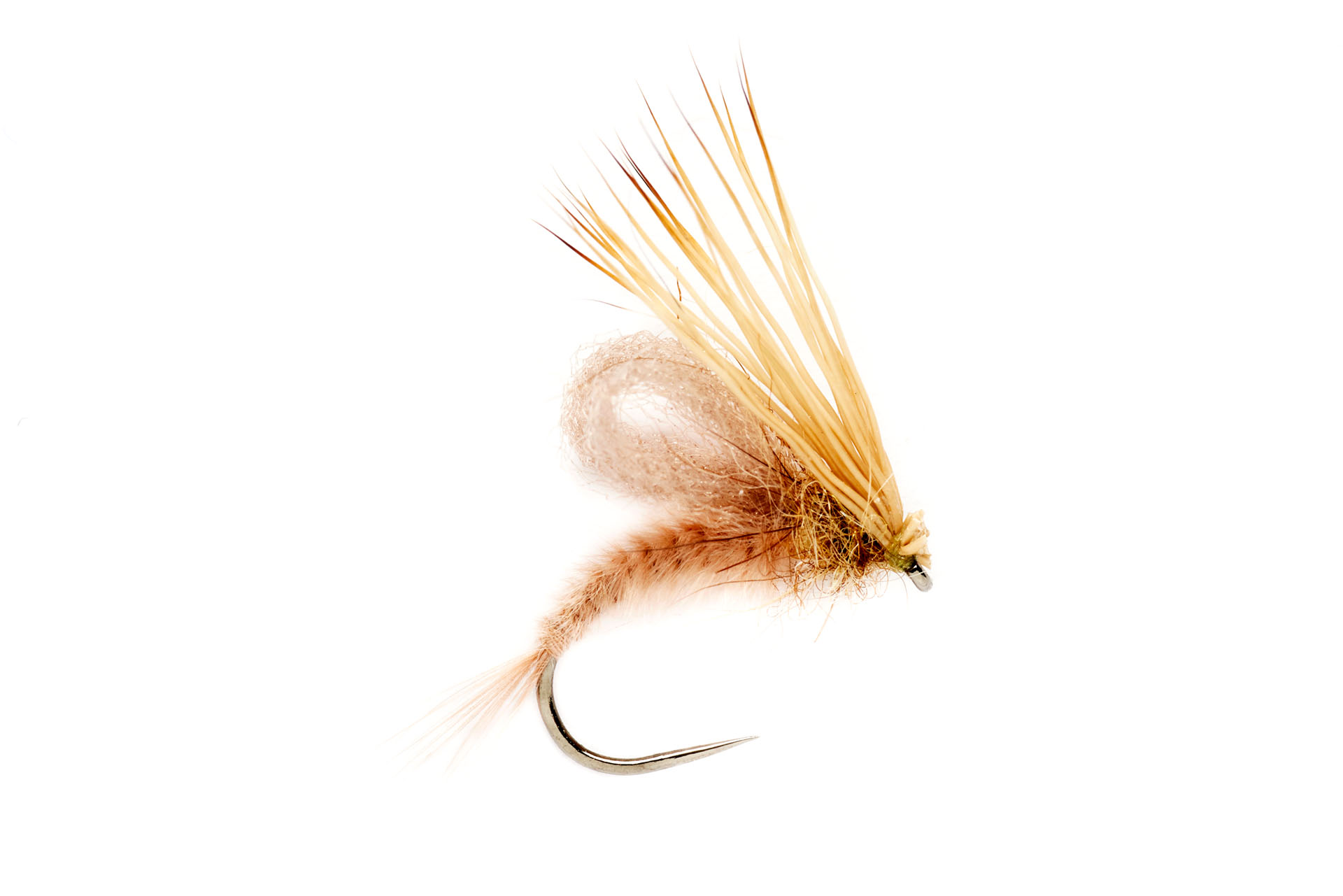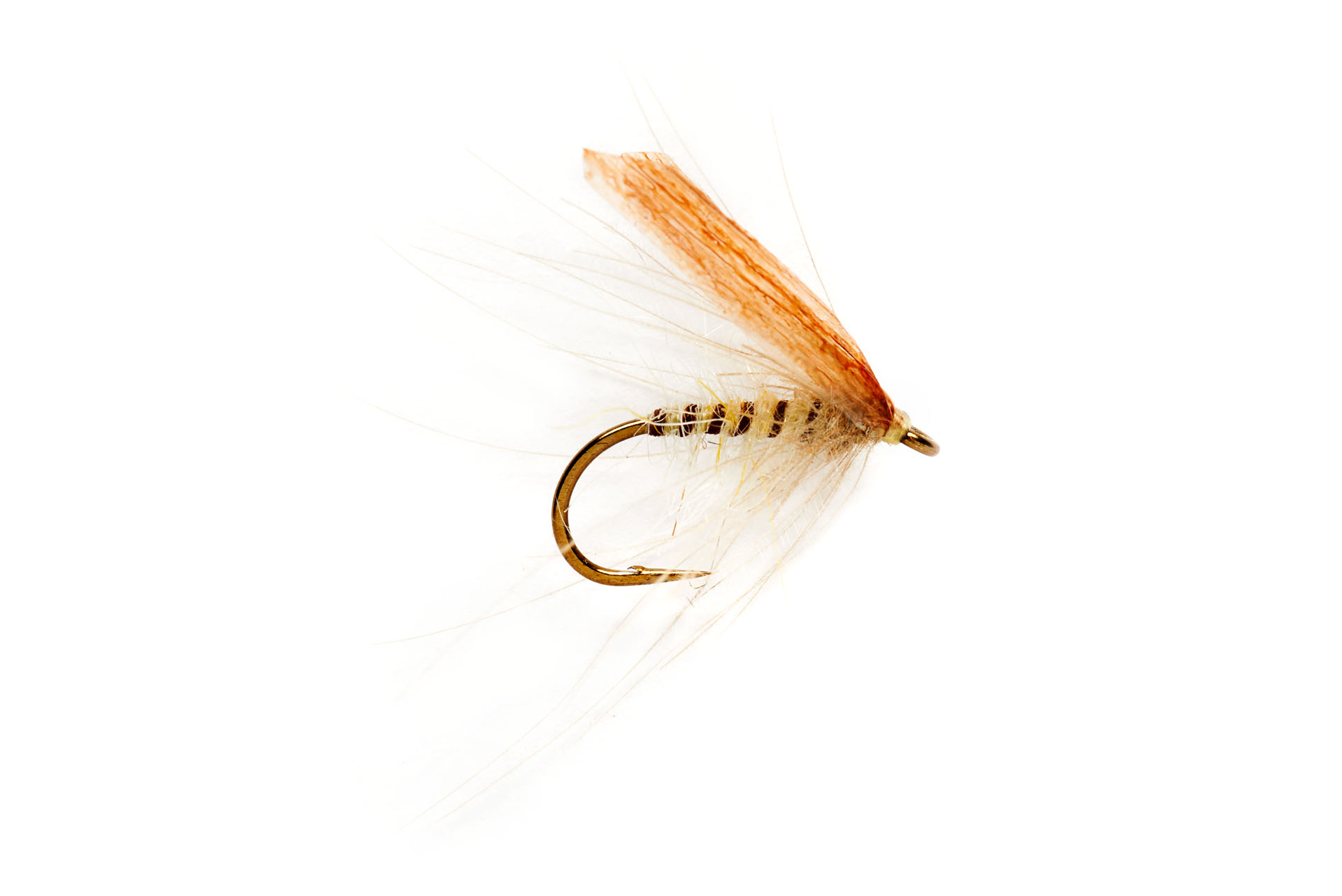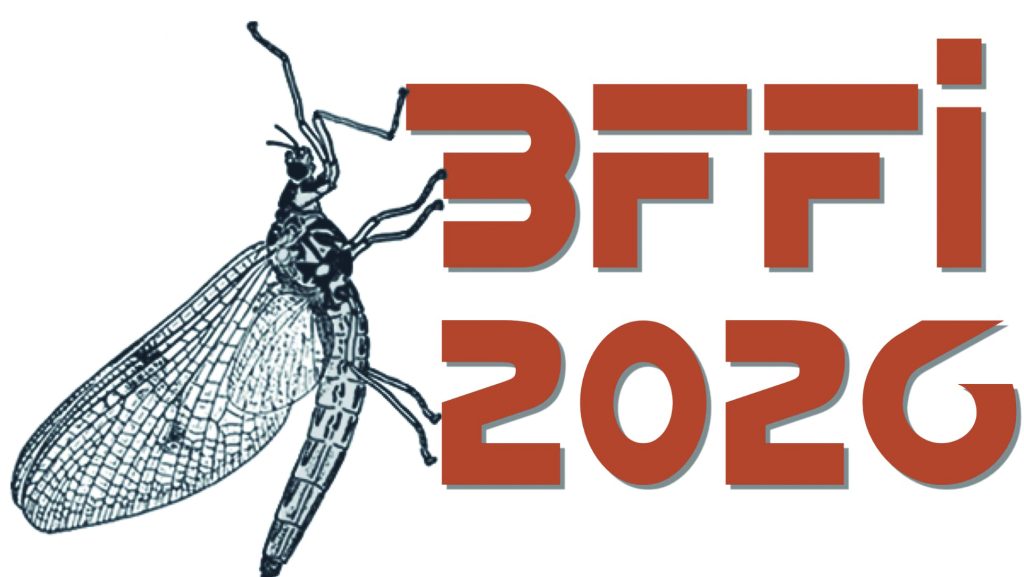How to catch sedge-feeding river trout
Your questions answered about the most reliable hatch of high summer

ON BRIGHT SUMMER days, hatches of fly are often restricted to the hour around dusk. Sedge, in particular, will wait until the lights are out before they emerge – and then they are likely to excite the trout. In July, try to time your arrival on the bank to just before “last orders” and even then you may face an eerie silence for 30 minutes or so. As summer drifts on, aim to be ready for the half-light. Those fishers who arrive much earlier are likely to stare at lifeless pools, become disheartened and head home before the action begins.
Another reason why some fishers stumble is their fascination with upwinged flies, especially blue-winged olives. Such is this fly’s repute and association with evening fishing that many of us have become blinkered and knot on a BWO imitation before we have even set eyes on our chosen pool. We believe that the latest new-fangled Paradun will tempt every trout in the river, ignoring the fact that the fish are gulping down sedge.
I’m often asked how I fish the sedge hatch – here are answers to some common questions:
How can you tell if trout are feeding on sedge?
You need to observe the way that fish are rising. Too often, we say to ourselves “one more cast before changing fly” and then keep going. Instead, put your rod down for a few moments and watch.
Whether it’s BWOs, caenis or yellow May duns, a trout munching down night-shift ephemerids seldom makes a fuss. Instead, a subtle kiss of the water or a dimple is its calling card.
Also, consider where the bulk of the rises are occurring. Immediately after emerging, upwings often remain stranded at the surface for several seconds, waiting for their wings to harden enough for take-off. By which time they’ve been pulled downstream to slack water, where the trout line up to meet them.
Conversely, sedge are literally bursting free of their shucks when nearing the surface and on breaching the film they are gone. Only the odd one will need a jump-start, by way of a hop or skip to get them airborne. To secure a meal, the fish need to be quick out of the blocks. Trout eating ascending sedge move swiftly and displace more water, resulting in bulging rises.
Where should you look for sedge-feeding fish?
Caddis larvae generally develop and pupate where currents quicken, typically in the neck of a pool, pocket water or lengthy, thin streams. Here, the pupae need only make a short dash before transforming themselves. Remember, sedge don’t loiter on the surface, so a trout intent on a meal must edge into this thin water as darkness approaches. It’s here that we need to focus our attention.
Following the main hatch, there will be inevitable stragglers, stillborns and those cursed with crumpled wings, all of which get swilled downstream to flat, oily water. Therefore, after a final cast in the tumbling neck water, it is worth turning around to glance back over the smooth main belly of a pool for signs of activity.
How long is your typical leader and what diameter and strength should the nylon be?
Longer leaders improve your chance of a drag-free presentation. However, fishing in the twilight is about getting close to rising fish and relying on short drifts, before lifting off to recast. Given this, I’m more than happy with a leader that is no longer than 12 ft long.
The witching hour is a cue for bigger trout, especially when sedge hatch in hordes, so I’m inclined to up the tippet strength to something like 4.5lb (approx. 0.15mm diameter). Don’t worry about your imitation appearing unnatural because drifts are short, which give grabbing currents little time to tow the fly this way or that.

Novice anglers often associate splashy rises with adult sedge flitting across the surface. From time to time, trout will chase these low-flying morsels, but energy-wise, it’s not cost-effective for them.
Fish seizing sedge pupae on the cusp of emerging do so with urgency, nabbing their dinner before it disappears in a blur of wings. These walloping rises make disturbances that in the half-light can easily be misconstrued as trout eating off or above the surface. As you’re unlikely to be able to see much beyond your rod tip, let alone what might be hatching, a torch beam directed at your feet may reveal clues. If discarded sedge pupa shucks litter the surface, the chances are the fish will be
locked on to emergers.
As mentioned, trout mopping up stillborn and disabled sedge are more likely to be found in slacker water or along the margins where the caddis flotsam tends to gather. The fish rise to these casualties in a more subtle “normal” way.
What water and weather conditions are ideal for sedge hatches?
Periods of warm, settled weather are ideal as, like many insects, sedges are sensitive to sudden weather changes.
Clear skies may extend daylight by 30 minutes or so, but with little cloud to retain heat, air temperatures drop quickly. In these circumstances, any activity concludes sooner, but is usually more intense. Cloudy evenings offer a longer window of opportunity because not only is daytime heat locked in, but with the sun obscured and less light, the sedge begin their emergence earlier.
Following a prolonged dry spell, a dollop of rain is normally welcome. However, in high summer when water temperatures reach the high teens, this injection of fresh water brings with it a distinct chill. A sudden plunge by several degrees is enough to knock flies and trout off balance – hatches may shut down for a few days as the flies adjust to the change.
Any lift in water levels is bound to affect water clarity, too. Murk and sediment may not be detrimental to hatches per se, but having enjoyed several days swimming in pools as clear as London’s finest gin, the trout may be irritated by fine particles of grit and soil.
Another arch enemy is a brisk breeze. For reasons best known to themselves, sedge pupae seem reluctant to emerge in a wind. Perhaps the turbulence sends the newly emerged adults crashing back on to the water, making them sitting ducks. Whatever the reason, I’ve never fared as well when squally winds ruffle a pool.
How do you see the takes?
It usually requires some guesswork with your eyes squinting to keep tabs on your fly in fast water. Even patterns with pale wings aren’t much help as they merge with foam flecks. However, the combination of fading light, boisterous water and the trout’s willingness to feed means you can get closer than normal to fish. Often, I’ve been within a rod’s length of them, including some huge specimens.
Although you may spot a pale-winged fly trundled close to a dark bank or shadow, don’t wait to be certain that your fly has been taken – tighten if you suspect any disturbance in its vicinity. There will be times when everything goes solid, but many more when your fly is whipped away. Under normal circumstances, the commotion caused, no matter how slight, would alert the fish. But trout holding in noisy water in the darkness are wolfing down caddis and become bewilderingly tolerant.
They may be rising every few seconds and you are likely to experience several phantom takes before connecting. My mantra is simple: if a trout continues rising, just keep casting and lifting. Sooner or later, it’s bound to take your fly.
Which flies do you recommend for sedge-feeders?
I would choose an emerger-type dressing rather than a full-dry-fly. After several revisions, including more elaborate tyings, the ES (emerger/stillborn) Caddis has become my first-choice pattern when there’s a sniff of sedges.
It’s dressed on a curved hook and most of it hangs subsurface. Marabou is spun around tying thread to make a rope for the body (shuck), which not only appears segmented but also there’s a hint of movement. Fibres can easily be teased out of the dubbing-loop thorax to suggest a confusion of legs. The looped underwing mimics the wing pockets evident on either side of an emerger pupa, which are also seen on discarded shucks. Elk hair keeps the thing afloat and allows us to locate our fly, too.
Another option for twilight sedge is the ARC (All Round Caddis), an all-rounder because it covers emergers, stillborns or drowned adults. It is good for targeting fish that are lying in pool tails and mopping up stragglers from an earlier hatch.
A single fly is best presented across flows and allowed to swing gently. A tensioned line means you now “feel” rather than look for takes.
 ES Caddis
ES Caddis
Hook Size 12-14 Partridge K4A/Y Thread Danville’s Flymaster 6/0 primrose
Tail/body Veniard beige dyed marabou Underwing Dun poly-yarn Thorax Orvis Spectrablend nymph dubbing tan or olive Wing Elk hair, bleached or natural
 ARC
ARC
Hook Size 14 Partridge Supreme dry Thread Sheer 14/0 primrose
Rib Benecchi brown poly-floss Body Orvis Spectrablend nymph cream or olive
Thorax Hare’s fur Hackle CDC fibres Wing Tan Medallion wing sheeting
| Tips for trouting at twilight |
|---|
|
1. Try to maintain a short length of fly-line beyond the rod tip (usually two rod lengths; never more than three), especially leading up to dark. This way you become accustomed to a given distance and instinctively know the whereabouts of your fly. 2. It’s lavish, but I carry a spare rod with an identical set-up, which can be called into action in the event of a snarled leader, or worse, a bat becoming tangled in your line (more common than you might think). With trout often active for no more than an hour, precious time shouldn’t be wasted unknotting a bird’s nest. 3. Arrange your flies in a threader-type fly-box (below). This way a fresh fly can be knotted on quickly and with little fuss.  4. Make sure you have a torch. One that fixes to a cap’s peak is useful, as are those with a flexible neck, which can be clipped to a waistcoat pocket. 5. It helps to fish into the last of sunlight, which will illuminate a pool, but in reality, rivers twist and turn and your river may also be shrouded in trees that block ambient light. Therefore the best strategy is to become familiar with your surroundings in daylight, noting any drop-offs, rocks and channels. |





 ES Caddis
ES Caddis ARC
ARC
